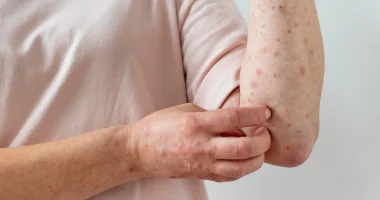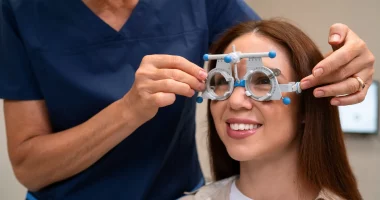Capnocytophaga infection is caused by bacteria from the Capnocytophaga genus, which are part of the normal oral flora in humans and animals. These bacteria are typically harmless but can become pathogenic in particular conditions. The infection was first found in the 1970s and is associated with severe illness, especially in individuals with compromised immune systems, chronic diseases, or following animal bites.
Symptoms can range from mild to severe, including chills, fever, and sepsis. Diagnosis typically involves blood cultures or other microbiological tests. Treatment usually needs antibiotics, and prompt medical attention is important to manage complications and prevent serious outcomes.
Symptoms
Capnocytophaga infection can present with a range of symptoms depending on the seriousness and the patient’s overall health. Early symptoms may include fever, chills, and malaise. Patients might also experience localized symptoms like swelling, redness, or pain at the site of an animal scratch and bite. In some cases, symptoms can resemble those of other bacterial infections, like nausea, vomiting, and general body aches.
In more severe cases, the infection can lead to serious complications like sepsis, which is characterized by rapid heart rate, hypotension, and confusion. Other potential complications include abscess formation, cellulitis, and, in rare instances, systemic infections that can affect multiple organs. People with weakened immune systems or underlying health conditions are at higher chance for more severe manifestations of Capnocytophaga infection.
Causes
Capnocytophaga infections are mainly caused by bacteria from the Capnocytophaga genus, which are commonly found in the oral flora of humans and animals, particularly dogs and cats. These bacteria can enter the body through scratches, bites, or other breaches in the skin. Animal bites are a common route of infection, as the bacteria can be transferred from the animal’s mouth to human wounds. Poor oral hygiene or contact with the saliva of infected animals can also contribute to the spread of these bacteria.
Certain factors increase the chance of developing a Capnocytophaga infection. People with weakened immune systems, chronic diseases like diabetes, or those undergoing immunosuppressive therapy are more susceptible to serious infections.
Additionally, individuals with liver disease or splenectomy are at higher chance due to their compromised ability to fight off infections. Prompt intervention and proper wound care are essential to prevent complications and handle the infection effectively.
Treatment
The intervention of Capnocytophaga infections usually involves a combination of supportive care and antibiotics. Antibiotics are utilized to target the bacteria and are selected based on sensitivity testing, as the specific strain’s susceptibility can vary. Commonly prescribed antibiotics include ceftriaxone, penicillin, and clindamycin. In severe cases, especially those involving sepsis or multiple organ systems, endovenous antibiotics may be required to ensure adequate penetration and efficacy.
Additionally, to antibiotics, supportive care is crucial in managing symptoms and complications. This may include pain management, fluid resuscitation, and monitoring for signs of systemic involvement. Wound care is also essential, especially if the infection originated from an animal bite or scratch.
For people with underlying health conditions or compromised immune systems, managing these conditions is an integral part of the treatment to improve overall outcomes. Early intervention and adherence to the prescribed treatment regimen are key to preventing serious complications and ensuring recovery.
Diagnosis
Here are the key points for diagnosing Capnocytophaga infections:
Clinical History
Evaluate the patient’s history of animal bites or scratches, particularly from cats or dogs, and assess any symptoms like chills, fever, or localized redness.
Physical Examination
Look for signs of infection at the site of animal contact, including inflammation and pain. Assess for systemic symptoms such as fever or sepsis.
Microbiological Testing
- Blood Cultures: Perform blood cultures to identify Capnocytophaga species in cases of systemic infection.
- Wound Cultures: If the infection is localized to a wound, culture samples from the wound to confirm the presence of Capnocytophaga bacteria.
Imaging Studies
Utilizing imaging techniques like X-rays or CT scans if there are signs of deep tissue infection, abscesses, or other complications.
Serological Tests
In some cases, serological tests may be used to identify antibodies or other markers of infection, although these are less commonly used for Capnocytophaga.
Sensitivity Testing
Once Capnocytophaga is identified, conduct sensitivity testing to determine the most effective antibiotics for treatment.
Prevention
Preventing Capnocytophaga infections involves several key strategies, particularly focusing on reducing the risk of animal bites and managing wounds properly. Avoiding close contact with animals, especially if they are known to be aggressive or if their oral hygiene is poor, can minimize the risk of bites and scratches.
Additionally, maintaining good hygiene practices, like washing hands thoroughly after handling animals, can help decrease the likelihood of bacterial transmission. Ensuring pets are well-cared for and up-to-date on vaccinations can also lower the chance of infection.
For individuals who experience animal bites or scratches, prompt and appropriate wound care is important. Clean the wound thoroughly with water and soap and seek medical attention if the bite is deep or shows signs of infection.
In some cases, prophylactic antibiotics may be suggested to prevent infection, especially for those with compromised immune systems or underlying health conditions. Regular check-ups with healthcare providers and timely treatment of any signs of infection can further help in preventing severe complications associated with Capnocytophaga infections.
When to consult a healthcare provider
Consult a healthcare provider if you experience any symptoms of a Capnocytophaga infection following an animal bite or scratch, like persistent chills, fever, or localized redness and swelling at the wound site. Seek medical attention immediately if symptoms worsen, or if you develop signs of severe infection like confusion, rapid heart rate, or hypotension. It is also important to consult a healthcare provider if you have a compromised immune system, chronic health conditions, or if you’re unsure about the appropriate wound care and prevention measures. Early intervention is essential to prevent serious complications and ensure effective treatment.
Summary
Capnocytophaga infections, caused by bacteria from the Capnocytophaga genus, often result from animal bites or scratches. Symptoms can range from fever and localized pain to severe complications like sepsis. Diagnosis involves evaluating clinical history, physical examination, and microbiological testing.
Treatment includes antibiotics tailored to the bacteria’s sensitivity, along with supportive care and wound management. Prevention focuses on minimizing animal contact, practicing good hygiene, and ensuring proper wound care. Prompt medical attention for bites and scratches is crucial to avoid severe outcomes.








